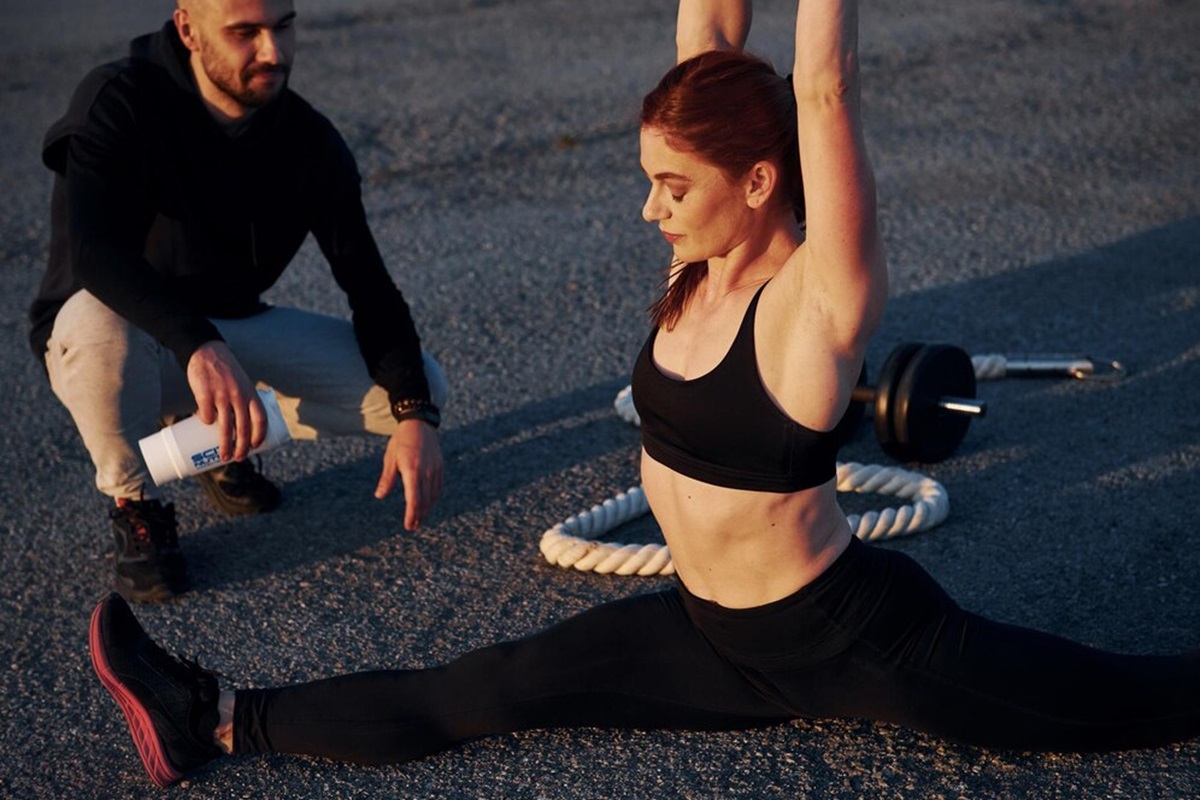After an intense workout, your body craves a return to balance. While most fitness enthusiasts immediately think of static stretching as the go-to recovery method, at Sustain Physical Therapy and Performance in Boston's Back Bay, we take a more comprehensive approach to post-exercise recovery.The Truth About Post-Workout StretchingWhen you finish exercising, your sympathetic nervous system—your …
Post-Workout Stretch: Beyond Traditional Recovery Methods

After an intense workout, your body craves a return to balance. While most fitness enthusiasts immediately think of static stretching as the go-to recovery method, at Sustain Physical Therapy and Performance in Boston’s Back Bay, we take a more comprehensive approach to post-exercise recovery.
The Truth About Post-Workout Stretching
When you finish exercising, your sympathetic nervous system—your body’s “fight or flight” response—is often still activated. Your heart rate remains elevated, muscles are warm, and your body is in a heightened state of alertness. A proper cool-down isn’t just about stretching muscles; it’s about helping your entire system transition back to a state of rest.
While post-workout stretches have traditionally been touted as essential for flexibility and recovery, research shows their effects on long-term mobility might be more limited than previously thought. That doesn’t mean stretching isn’t beneficial—it simply means it’s just one tool in your recovery arsenal.
Beyond Stretching: Comprehensive Recovery Methods
At Sustain Physical Therapy and Performance, we teach our Boston clients a variety of techniques to bring their nervous systems “down” after exercise:
1. Controlled Breathing Exercises
Simple breathwork can dramatically shift your nervous system from sympathetic (stress) to parasympathetic (rest and digest) dominance:
- Try box breathing: inhale for 4 counts, hold for 4, exhale for 4, hold for 4, and repeat for 3-5 minutes
- Diaphragmatic breathing activates the vagus nerve, which helps regulate heart rate and blood pressure
2. Active Recovery Movement
A gentle cool-down walk or light movement session helps:
- Gradually lower heart rate
- Promote blood circulation for faster waste removal from muscles
- Provide a mental transition from high-intensity to rest
3. Strategic Stretching
When you do stretch post-workout:
- Focus on the areas that feel particularly tight
- Hold each stretch for 20-30 seconds
- Breathe deeply during stretches to enhance relaxation
- Consider dynamic stretches that incorporate movement rather than just static holds
4. Mindfulness Practices
Taking even 5 minutes to practice mindfulness after exercise can:
- Reduce cortisol (stress hormone) levels
- Improve recovery time
- Create mental space between your workout and the rest of your day
Understanding Your Autonomic Nervous System: The Key to Effective Workouts and Recovery

Your autonomic nervous system (ANS) plays a crucial role in both exercise performance and recovery. This complex network operates largely behind the scenes, controlling involuntary bodily functions like heart rate, blood pressure, breathing, and digestion.
The Sympathetic vs. Parasympathetic Response
The ANS has two primary branches:
1. Sympathetic Nervous System (SNS) – Often called the “fight or flight” response, this system:
- Increases heart rate and blood pressure
- Diverts blood flow to working muscles
- Releases energy stores (glucose) for immediate use
- Dilates airways for increased oxygen intake
- Releases stress hormones like adrenaline and cortisol
2. Parasympathetic Nervous System (PNS) – Known as the “rest and digest” or “recover and restore” response, this system:
- Decreases heart rate and blood pressure
- Improves digestion and nutrient absorption
- Promotes tissue repair and growth
- Conserves energy
- Supports immune function
The ANS Balance in Exercise and Recovery
During a workout, your sympathetic nervous system dominates—providing the energy, focus, and physiological responses needed for performance. This is exactly what you want during exercise, as it mobilizes resources for physical exertion.
However, problems arise when you remain in this sympathetic-dominant state long after your workout ends. Chronic sympathetic activation can lead to:
- Elevated resting heart rate
- Disrupted sleep patterns
- Impaired digestion
- Compromised immune function
- Increased inflammation
- Slower tissue repair
- Higher risk of overtraining syndrome
The key to optimal recovery lies in successfully transitioning from sympathetic to parasympathetic dominance after exercise. This shift allows your body to:
- Begin the repair processes necessary for muscle growth and adaptation
- Replenish energy stores
- Reduce inflammation
- Support immune function
- Prepare for your next training session
At Sustain Physical Therapy and Performance, we help our Boston clients understand their autonomic nervous system responses and develop strategies to effectively transition between these states for optimal performance and recovery.
Why a Proper Cool-Down Matters for Boston’s Active Community
Boston’s Back Bay neighborhood is home to runners tackling the Charles River paths, professionals squeezing in lunchtime HIIT sessions, and weekend warriors pushing their limits. Regardless of your activity level, implementing proper recovery techniques offers significant benefits:
- Reduced risk of injury
- Better exercise performance in subsequent workouts
- Decreased muscle soreness
- Improved sleep quality
- Enhanced overall wellness
The Sustain Approach to Physical Therapy

At Sustain Physical Therapy and Performance, we don’t see our patients as broken individuals needing to be fixed. Instead, we focus on building them up, enhancing their strengths, and empowering them with knowledge about their own bodies.
Autonomic Nervous System Assessment and Training
A distinguishing feature of our practice is our focus on autonomic nervous system health. Our assessment process includes:
- Heart rate variability (HRV) monitoring to assess autonomic balance
- Breathing pattern evaluation to identify potential nervous system dysfunction
- Sleep quality and recovery metrics analysis
- Stress management and recovery techniques personalized to your lifestyle
We teach our clients to recognize their own autonomic responses and provide tools to shift between sympathetic and parasympathetic states intentionally. This autonomic flexibility is a cornerstone of both athletic performance and everyday wellness.
Personalized Recovery Protocols
Our physical therapists work with clients to develop personalized recovery routines that fit seamlessly into their lifestyles. We understand that Boston’s professionals have demanding schedules, so we emphasize efficient, effective methods that deliver results without requiring hours of your time.
These protocols often include a combination of:
- Targeted mobility work based on individual assessment
- Nervous system regulation techniques
- Nutrition and hydration strategies to support recovery
- Sleep optimization practices
- Stress management tools
When to Seek Professional Guidance
While basic post-workout recovery techniques can be implemented on your own, certain situations warrant professional guidance:
- Persistent soreness that doesn’t improve with standard recovery methods
- Pain that increases rather than decreases after workouts
- Recurring injuries or compensatory movement patterns
- Plateaus in performance despite consistent training
Our team at Sustain Physical Therapy in Back Bay offers specialized assessments to identify mobility restrictions, movement compensations, and recovery strategies tailored to your specific needs.
Experience the Sustain Difference
If you’re looking to optimize your post-workout recovery and overall performance, we invite you to experience the Sustain approach. Our Back Bay clinic combines evidence-based physical therapy with practical, sustainable strategies that fit into your busy Boston lifestyle.
Remember: recovery isn’t just about stretching—it’s about creating a comprehensive approach that brings your entire system back to balance after exertion.
To learn more about our approach to physical therapy and performance or to schedule an appointment at our Back Bay location, contact Sustain Physical Therapy and Performance today.
FAQs
What stretch is best after a workout?
The best post-workout stretches target major muscle groups used during your workout. These include hamstring stretches, lunging hip flexor stretches, overhead triceps stretches, and child’s pose. Combine static and dynamic stretches for optimal muscle recovery.
What is the meaning of post-workout stretching?
Post-workout stretching refers to flexibility exercises performed after exercise to aid in muscle relaxation, prevent injury, reduce muscle tension, and improve range of motion. It helps your body transition from exertion to recovery.
Is it good to stretch directly after a workout?
Yes, stretching directly after a workout helps bring your heart rate down, reduces stiffness, promotes blood flow, and supports lactic acid breakdown. It’s an essential component of a balanced recovery routine.
Dr. Adam Babcock PT, DPT
“We Help Active Adults Quickly Recover From Pain Or Injury So They Can Stay Active, Get Back To What They Love To Do, and Do It For Decades”






